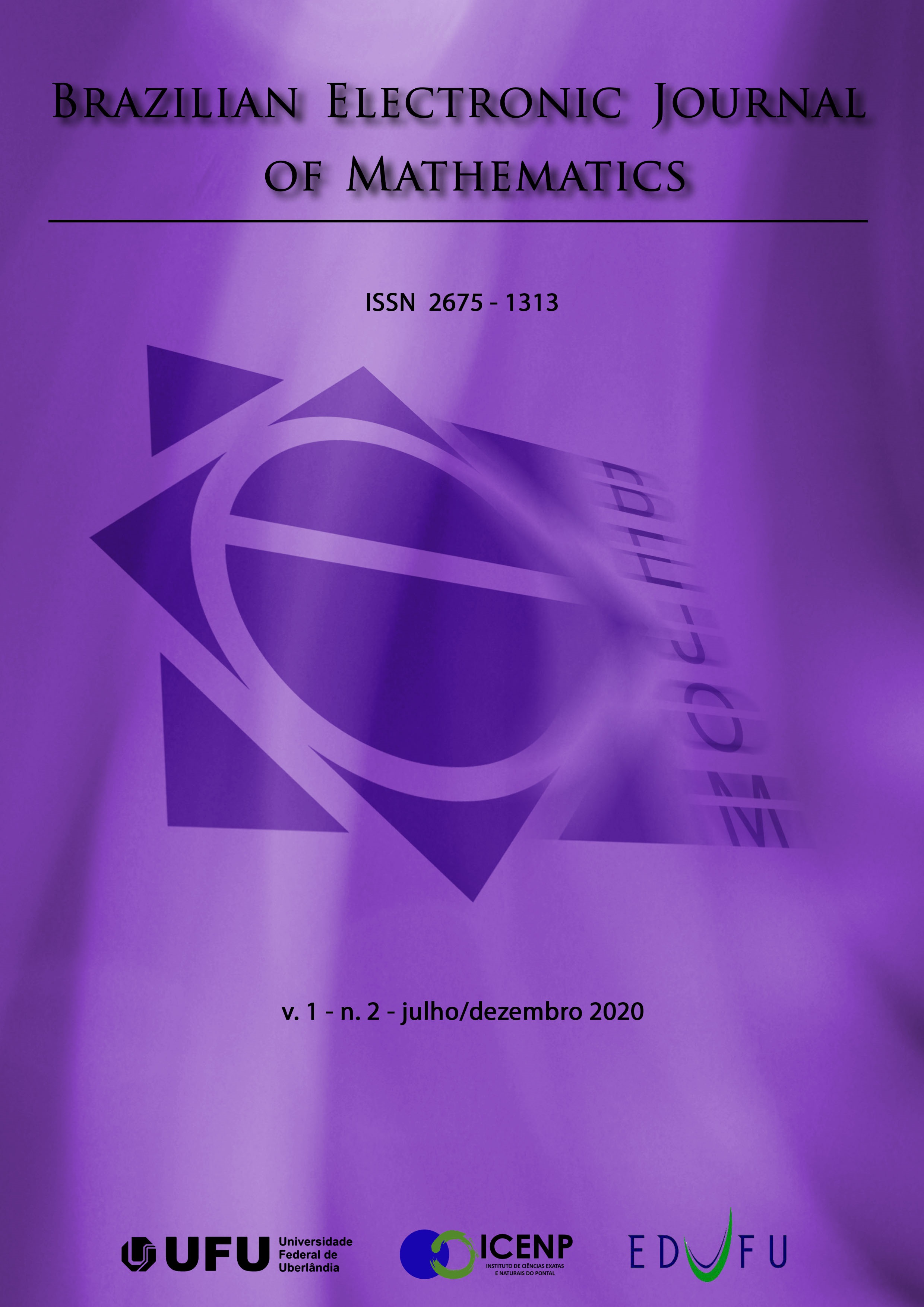Optimum design of 3R robot manipulador by using Improved Differential Evolution implemented in parallel computation
DOI:
https://doi.org/10.14393/BEJOM-v1-n2-2020-54671Palavras-chave:
Optimization, Robotics, Differential Evolution, Parallel Computation, Improved Differential EvolutionResumo
In recent decades the great interest in Evolutionary Algorithms (EAs) has boosted their development leading to a significant improvement in their efficiency and applicability. Thus, EAs have been applied to solve optimization problems in different areas of knowledge. A promising optimization method known as Differential Evolution (DE), which belongs to the class of AEs, has attracted the attention of researchers. The DE algorithm is simple, robust and efficient. However, by testing with classical optimization problems noticed that sometimes the results obtained with DE are not as satisfactory as expected or that in many cases the algorithm ends the search for the optimal solution prematurely. Recently, with the advancement and greater availability of computer technology, the scientific community has been thinking about the implementation of optimization algorithms in parallel in order to reduce the processing time. The main objective of this paper is to present an improvement of the Differential Evolution optimization method, proposing modifications to the basic algorithm by using shuffled complex and making it able to work with parallel computing. The proposed methodology is applied to the optimal design of an orthogonal 3R robot manipulator that takes into account the characteristics of its workspace. For this purpose, a multi-objective optimization problem is formulated to obtain the optimal geometric parameters for the robot. The maximum workspace volume, the maximum system stiffness and the optimum dexterity are considered as the multi-objective functions. The results show that the procedure represents a promising alternative for the type of problem presented above.
Downloads
Referências
ABDEL-MALEK, K.; YEH, H-J.; OTHMAN, S. Understanding Voids in the Workspace of Serial Robot Manipulators, Proceedings Pf 23rd ASME, DesignEngineering Technical Conference, Baltimore, Maryland, 2000.
BERGAMASCHI, P. R.; NOGUEIRA, A. C.; SARAMAGO, S. F. P. Design and Optimization of 3R Manipulators using the Workspace Features, Applied Mathematics and Computation, Vol. 172, pp. 439-463, 2006.
BAILI, M. Analyse et Classification de Manipulateur 3R axes Orthogonaux, Thèse de Doctorat - University of Nantes, France, 2004.
BERGAMASCHI, P. R.; SARAMAGO, S. F. P.; COELHO, L. S Comparative Study of SQP and Metaheuristics for Robotic Manipulator Design, Applied Mathematics and Computation, Vol. 58, pp. 1396-1412, 2008.
BRANDÃO, M. A. L.; OLIVEIRA, L. S.; SARAMAGO, S. F. P. Técnicas de Evolução Diferencial com Conjuntos Embaralhados, 21oPOSMEC – Simpósio do Programa de Pós-Graduação em Engenharia Mecânica da Universidade Federal de Uberlândia, 2011.
BRANDÃO, M. A. L.; DORICIO, J. L.; LOBATO, F. S.; SARAMAGO, S. F. P. A Comparative Study Using Shuffled Complex Evolution and the Differential Evolution Applied to Robotic Manipulator Design, 10thWorld Congress on Computational Mechanics, Computational Mechanics 2012 Proceedings, São Paulo, Brazil, 2012.
BUJOK, P. Parallel Models of Adaptive Differential Evolution Based on Migration Process, Aplimat - Journal of Applied Mathematics, Vol. 4, No. 2, 2011.
CECCARELLI, M. A Formulation for the Workspace Boundary of General N-Revolute Manipulators, IFToMM Journal of Mechanism and Machine Theory, Vol.31, pp. 637-646, No. 5, 1996.
CECCARELLI, M.; LANNI, C. A Multi-objective Optimum Design of General 3R Manipulators for Prescribed Workspace Limits, Mechanism and Machine Theory, Vol. 39, pp. 119-132, 2004.
CHONG, C. K.; MOHAMAD, M. S.; DERIS, S.; SHAMSIR, M. S.; CHOON, Y.W.; CHAI, L. E. Improved Differential Evolution Algorithm for Parameter Estimation to Improve the Production of Biochemical Pathway, International Journal of Interactive Multimedia and Artificial Intelligence. Special Issue on Distributed Computing and Artificial Intelligence, Vol. 1, pp. 22-29, 2012.
COELHO, L. S.; SOUZA, R. C. T.; MARIANI, V. C. Improved differential evolution approach based on cultural algorithm and diversity measure applied to solve economic load dispatch problems, Mathematics and Computers in Simulation, Vol. 79, pp. 3136-3147, 2009.
DAS, S.; KONAR, A. CHAKRABORTY, U. K. Two Improved Differential Evolution Schemes for Faster Global Search, GECCO‘05, Washington, DC, USA, 2005.
DUAN, Q. A.; GUPTA, V. K.; SOROOSHIAN, S.A Parallel Differential Evolution Algorithm, Journal of Optimization Theory and Applications, Vol. 76, No.3,1993.
KWEDLO, W.; BANDURSKI, K.A Parallel Differential Evolution Algorithm,Parallel Computing in Electrical Engineering. PAR ELEC 2006, 2006.
LANNI, C; SARAMAGO, S. F. P.; CECCARELLI, M. Optimal Design of 3R Manipulators using Classical Techniques and Simulated annealing, Revista Brasileira de Ciências Mecânicas, Vol. 24, No. 4, pp. 293-301, 2002.
LI, R.; XU, L.; SHI, X-W.; ZHANH, N.; LV, Z-Q. Improved Differential Evolution Strategy for Antenna Array Pattern Synthesis Problems, Progress In Electromagnetics Research, Vol. 113, pp. 429-441, 2011.
MEHABLIA, A. An Improved Differential Evolution Algorithm and its Application in Reaction Kinetic Parameters Estimation, European Conference of Chemical Engineering, 2010.
OLIVEIRA, G. T. S. Estudo e Aplicações da Evolução Diferencial, Universidade Federal de Uberlândia, Uberlândia, MG, Brasil, 2006.
OLIVEIRA, L. S.; SARAMAGO, S. F. P. Multiobjective Optimization Techniques Applied to Engineering Problems, Journal of the Brazilian Society of Mechanical Sciences and Engineering (Impresso), Vol. XXXII, pp. 94-104, 2010.
PURCINA, L. A. Técnicas de Otimização Evolutivas aplicadas à Solução de Grandes Sistemas Lineares, Universidade Federal de Uberlândia, Uberlândia, MG, Brasil, 2010.
RAUPP, F. M. P.; FAMPA, M. C. H.; MELO, W. A. X. Evolução Diferencial Aperfeiçoada para otimização contínua restrita, XLII SBPO, Bento Gonçalves-RS, 2010.
SARAMAGO, S. F. P.; OTTAVIANO, E.; CECCARELLI, M.A Characterization of the Workspace Boundary of Three-Revolute Manipulators, Design Engineering Technical Conferences, Proceedings of DETC-02, ASME 2002, Vol. 1, pp. 34342-34352, Montreal, 2002.
TASOULIS, D. K.; PAVLIDIS, N. G.; PLAGIANAKOS, V. P.; VRAHATIS, M.N. Parallel differential evolution, Congress on Evolutionary Computation (CEC2004), pp. 2023-2029, 2004.
VARGAS, J. R. G.; VILLARREAL, L.; REYNOSO, J. M.; MIER-MAZA, R.Diseño de un Manipulador Industrial para Aplicaciones de Limpieza en Subestaciones Eléctricas, Centro Metropolitano de Investigación en Mecatrónica, ITESM Querétaro, 1992.
Downloads
Publicado
Edição
Seção
Licença
Copyright (c) 2020 BRAZILIAN ELECTRONIC JOURNAL OF MATHEMATICS (BEJOM)

Este trabalho está licenciado sob uma licença Creative Commons Attribution-NonCommercial 4.0 International License.
- Os artigos publicados a partir de 2025 são licenciados sob a versão CCBY-4.0. Ao enviar o material para publicação, os autores estarão automaticamente, concordando com as diretrizes editoriais do periódico e assumindo que o texto foi devidamente revisado. A submissão simultânea de artigos a outras revistas é proibida, e, é também proibida a tradução de artigos publicados no periódico para outro idioma sem a devida autorização.
- Os artigos publicados em anos anteriores a 2025 são licenciados sob a versão CC BY-NC 4.0.









